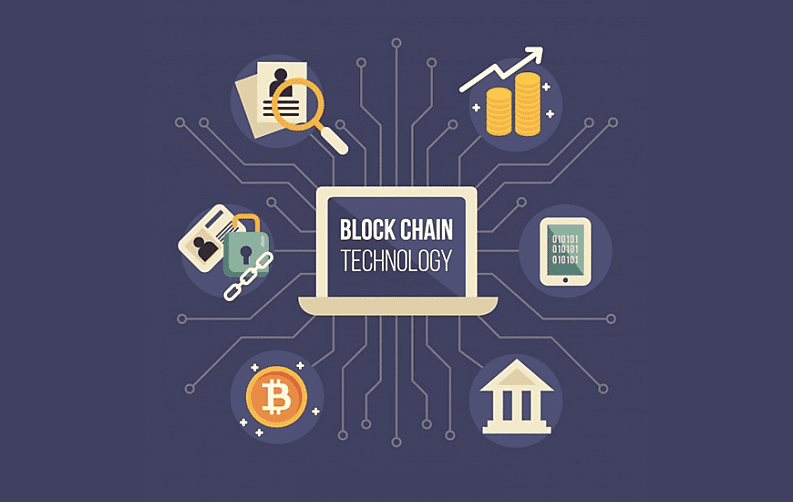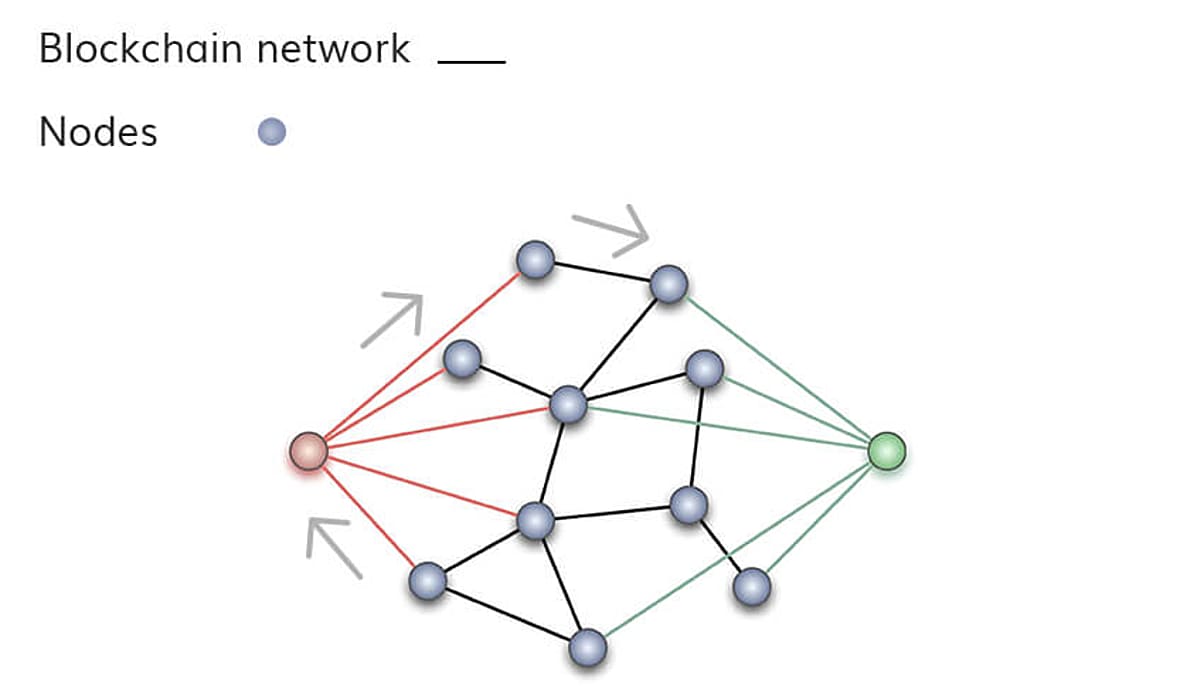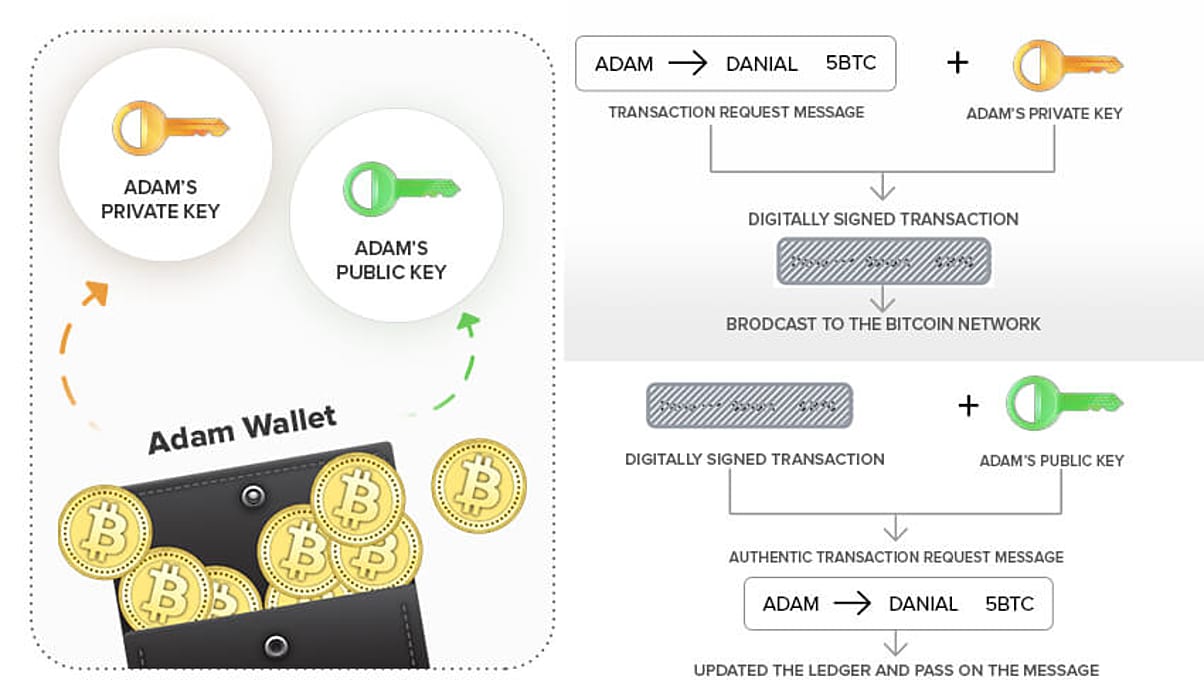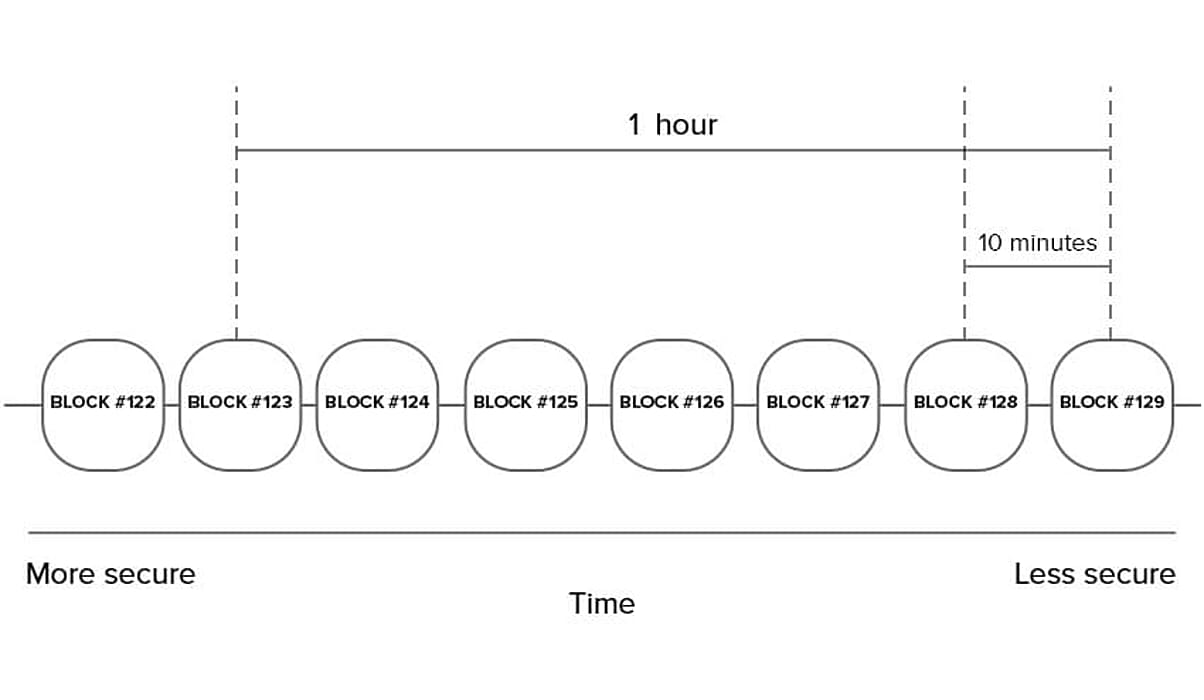
Bitcoin has been making quite a buzz since November 2018. Its prices skyrocketed in December and went surprisingly low in the first week of February 2019.
The debate on this fluctuation is for another day as Bitcoin is merely a small part of the ever-changing, revolutionizing technology - Blockchain. You must have heard about it and you might have dug your grey cells while browsing the web to understand the term.
“There are important counter-trends to this – like encryption and cryptocurrency — that take power from centralized systems and put it back into people’s hands. But they come with the risk of being harder to control.”
If you’re still wondering what Blockchain is and it seems like a difficult venture to grasp at once, understand that you’re not the only one. The technology itself is very complicated to comprehend.
Even tech giants like Mark Zuckerberg and Jack Ma are studying blockchain regularly to explore its usefulness in the technical industry. This is why most industries rely on top blockchain companies to get work done with utter perfection.
Highlights of the Article
- The basics of blockchain and bitcoin
- The basic terms associated with Blockchain
- Insights on how the process begins
- A brief on bitcoin balance
- Explanation of bitcoin security
- Fraud possibilities with bitcoin
- What is bitcoin mining?
- Bitcoin: benefits and limitations
Most tech giants and business leaders claim that the blockchain technology holds the power to revolutionize the financial sector. Only when we really take a dive into the waters of blockchain can we really figure out the things it has to offer beyond cryptocurrencies. Bitcoin is just a powerful example of what blockchain is capable of and the amount of transforming capabilities it holds.
With the help of this article, you will gain insight into how this technology works in the simplest manner possible. Before digging deep into the technical aspects and the trends of the blockchain technology, let us first understand the fundamental structure of this wonderful creation.
A Basic Idea of Blockchain
To understand why even we need blockchain in the first place, let us consider the following scenario.
Your friend and you have bet $100 on an el-Classico match (football match). You chose Barcelona and your friend says that Real Madrid will win (sorry, Ronaldo Fan).
Your friend and you trust each other and the one who loses gives $100 to the winner. But what if the loser backs out and refuses to pay the bet? To resolve this, you could
- Make a legal contract and write the rules in the agreement. This way, if one decides to back out, the other has the right to take legal action. But then again, this will require the winner to put in extra resources and money into filing the case along, not to mention the long trial.
- Involve a third-party, like a bank, so it can collect $100 from each party and give the money to the winner. However, this can't be trusted either. What if the third party runs away or turns to be a fraud?
This is where the blockchain technology comes to the rescue. It will work as a transaction medium but is a more decentralized and open network, as compared to the banks. The betting money will be safe and secure and it will send the money to the winner after confirming the bet result from various sources.
Before we move on with this, let’s take a look at the basic terms involved in the world of cryptocurrencies to garner a better understanding of the blockchain technology.
Terms Associated With Bitcoin
- Ledger: In order to keep records of all Bitcoin transactions, the technology uses a digital file known as a leader.
- Node: Every computer connected to the blockchain network using the internet connection is treated as a node.
- Wallet: Digital wallets are to maintain and contain cryptocurrencies.
- Inputs: Previous incoming transactions.

In order to make the whole process decentralized, blockchain shares ledgers with every node in the network. This means that every active node in the network has a copy of the ledger and it gets updated every time a transaction takes place.
For a better understanding, let’s compare this with a centralized bank unit, where all the details of the transaction are controlled by one entity. Here, everything is controlled and maintained by one resource, whereas the blockchain network provides all the details to everyone involved in the network and makes it open, which secures it as no one can manipulate or exploit it.
To make it even simpler, let us consider that you want to send 6 BTC to a writer for writing a book on your life. You will send a message to the blockchain network that your Bitcoin balance should go down by 6 BTC and the writer’s be increased by the same amount.
The message will be delivered to all the nodes across the network and every node will update the account balance with new transactions. This means that everyone knows everything here and collectively work as a single unit system.
How Does the Process of Blockchain Begin?
So far, we’ve used cryptocurrencies (Bitcoin) to explain the blockchain, so let’s go on to understanding the Bitcoin exchange process. To make a transaction, one needs a crypto-wallet to save, receive, and spend Bitcoins. These are digital wallets built using cryptography. Every crypto-wallet comes with a private and public key.
The public key is treated as the address of the user’s wallet and the private key is the password that is required by the blockchain network to encrypt or decrypt a message. If a user encrypts a message with a specific public key then only the paired private key can decrypt it and vice versa.
For instance, let us consider Tom, who wants to send Bitcoins to a party. This means that he needs to send an encrypted message using his private key across the blockchain network. The message will be sent to every node in the network and they can decrypt the message using Tom’s public key and know that the transaction was originated from Tom’s wallet.

A question that must have popped up in your head is if the message is shared with all the nodes, how it can be secured?
While encrypting a transaction message from the wallet, you are generating a digital signature using your private key. The blockchain computers use this signature to check the source and authenticity of the transaction. The signature contains strings of text that are unique and cannot be used for any other transaction.
So, if you make a change of even a single character in the transaction message, the signature will automatically change in the network and become invalid. This protects the process from any potential fraud and prevents the attacker from changing the amount of transaction.

The private key is confidential that will enable you to access your wallet and encrypt any transaction message. You can only broadcast a message when you’ve first encrypted it.

How to Know Your Bitcoin Balance?
The blockchain network does not maintain balance records. So, how does one figure out their bitcoin balance and make a transaction? The blockchain system doesn't record the balance, instead, it just maintains the records of each transaction ever made.
The ledger contains only the details about the transaction, not the balance. In order to make a transaction, the blockchain network uses previous transaction links in the ledger.
Consider this: you want to send 9 BTC to your friend. While making the transaction, you need to generate a request including the link to previous incoming transactions whose total should be equal to or more than 9 BTC. Theses previous transactions are also called inputs. Now, the blockchain will verify these inputs with every node across the network to confirm it.

As every input has been generated from the wallet, it contains a reference to your public key. Every node in the network has the details of these inputs in their copy of the ledger. So, it is almost impossible to spend double money using received Bitcoins.
No wonder Morgan Stanley ended up saying, “Bitcoin could become a “normal” trading purchase”.

Is blockchain Safe or Is Everyone Just Exaggerating?
While it might seem like a far-fetched thought, blockchain really is introducing the safest way to transact and maintain accounts, but there are some issues associated. Here’s why the public thinks so!
1. Identity theft
As mentioned before, to become a part of the blockchain network you need to own a wallet that will contain a private and public key. But, by using a VPN network or TOR Network, anyone can access the Bitcoin community without revealing anything.
Along with this you can also create as many wallets as you want and make a number of transactions and no one will be able to find out that you own all these wallets.
However, if you keep using the single public key every time or converge the Bitcoins from all wallets to one, it is possible to know that it belongs to a single owner.

2. Recalling the Spent Bitcoins
The blockchain has a potential loophole in its security. The spent bitcoins can be recalled after the transaction by using this flaw. All the transactions are passed node to node in the network.m So, the order of 2 transactions reaching each node could be different. This could be exploited by ordering another transaction to yourself.

For example, Jim sends a few Bitcoins to Molly and waits for Molly to ship his product. Later, he generates the request for the same number of bitcoins to be sent to his own wallet. In this case, some networks will receive the second transaction before the first one and will define the first payment invalid, since it would seem to them that the inputs were already spent.
This leads to a disagreement among the nodes and opens space for a fraudster to make illegal bitcoins. To overcome this, the blockchain has been designed to use nodes agreement to order the transaction and prevent this from happening.

3. Double-Spent Fraud
In the blockchain network, transactions are collectively gathered to create a group called blocks. These blocks contain the transactions and link to the previous block. The transactions that take place at the same time are taken into a single block and the transaction out of the blocks is treated as unconfirmed.
These blocks are created by the nodes and broadcasted to the network as a suggestion for a new block in the chain. This is why technology has been given the name Blockchain.

Now, an important question arises, who is the person responsible for deciding which block will be the next? Let’s break it this way.
Every node sends an answer to a cryptographically created mathematical question to get their block selected as the next one. The node that solves the right answer first gets to own the right to place its block next in the chain. The answer to such problems could be given by guessing some random numbers that are combined with the previous block content and give a definite result.
The typical computer would take a year to guess the right answer to this problem. But, as the blockchain network contains several numbers of nodes, it takes only 10 minutes to crack the question.
Now, what happens if more than one node solves the problem at the same time? In this case, both the blocks will be broadcast to the network. The node receiving the blocks first will build on that block, but the blockchain system wants the nodes to build the longest chain.
This will create an ambiguity about the last block. So, as soon as the following block gets verified by the networks, all the nodes will immediately join the longest chain.

This last block ambiguity generates a space for double-spending fraud. Imagine that you pay a vendor for a pair of shoes by sending bitcoins. If the vendor is able to generate the longest chain, including a reverse transaction, then you won't be getting any money or even your shoes.
However, the double-spending fraud is quite impossible practically as it will require the vendor to place their block within a limited time by solving a mathematical problem. And guessing the right answer is almost impossible in such a short time period.
If anyhow, the vendor is still able to solve the problem, they would need to place 2 or 3 more blocks in the line to create the longest chain as they would be against the whole network.
Talking about the practical analysis of the attack, it would require the vendor to have 50% of the network to get only a 25% chance to succeed. Even with the help of a supercomputer, it is impossible to do a double payment fraud.

This proves that the passing time makes the transaction more secure and irreversible. Since a new block adds to the chain after every 10 minutes, the block added 1 hour ago is perfectly secure from any potential attack.
And thus, Winklevoss Twins’ saying, “Increased Regulation Is Bullish for Bitcoin and cryptocurrency”, holds true.
What is Bitcoin Mining?
You may have come across this term before and wondered what it means. In order to make sure that Bitcoins remain stable and the blockchain networks work without any errors, a reward is provided to those who solve block broadcasted mathematical problems. The process of running the Blockchain software without any issue to acquire Bitcoin rewards is called mining.
The people with individual nodes form bigger groups to solve the block problem. This group uses the strength of nodes to solve the block faster and stabilize the blockchain to get the reward. This group of nodes is known as the mining pools, and there are some mining pools that comprise 20% of the whole network.
These collective groups of nodes charge the rewards from users to deliver faster transactions. It's simple, the more the reward you pay, the faster will you get the transaction and vice versa.
The Benefits of Blockchain
As of now, you have a pretty good idea of how the blockchain technology works. Now let’s take a look at its benefits and limitations.
- There is no third party involvement in the process so you have all the power in your own hands, making it secure.
- It is the safest transaction method and can’t be exploited by anyone to perform fraudulent activities.
- The transaction can be done from any part of the planet with a very low transaction fee.
- It is purely decentralized, which can be used to build more applications for managing and transferring the information without any threat to get manipulated.
- The technology makes the system fully transparent.
Limitations of Blockchain
- The network could be used anonymously by anyone without revealing his or her identity. This could encourage illegal activities over the network and no one can even track the people doing it.
- The complexity is another reason as the technology is fairly new to the world. This makes people hesitate to adopt it on a large scale.
- A factor of human error could be a big problem in this technology as the system works on a database. So, it is important to enter the data carefully.
Final Thoughts
So far, you’ve been introduced to the world of how blockchain works and studied its applications along with the safeguard against attacks. Needless to say, it is quite a revolutionizing technology. Removing the centralized system and offering transparency where we can own our transactions is the ideal way to process things.
However, the technology is still in its infancy and needs to evolve more so people can really understand how to use blockchain to their advantage.















